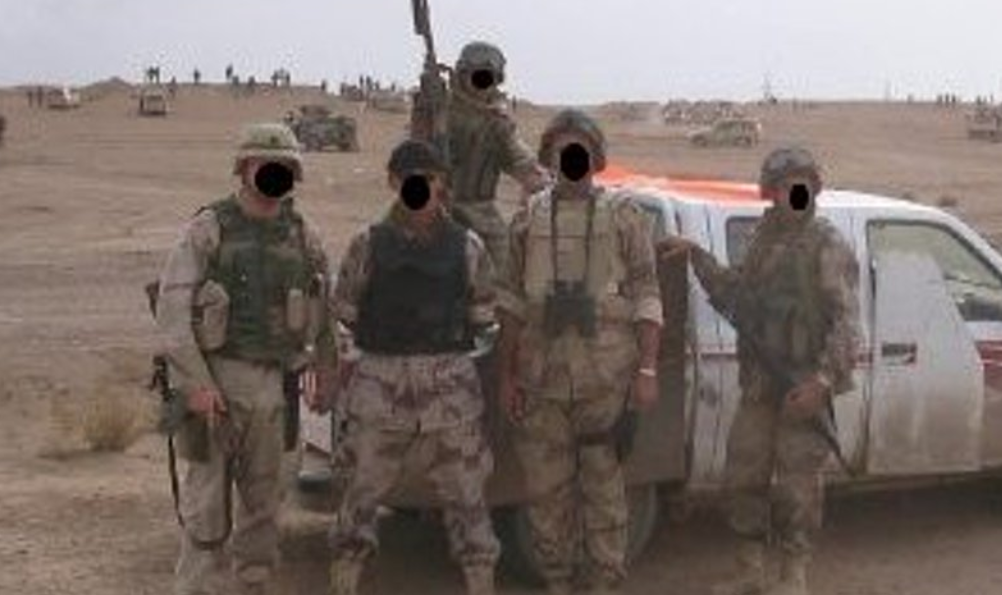Many pontificate on the “lessons” that are theoretically applicable from Fallujah to the situation in Gaza. Most doing the pontificating were not there of course back in November of 2004. I was, I was an advisor to Iraqi forces that entered the city, one of the few Army guys in the city for a week or more. Elliot Ackerman was too by his account, a Marine in an infantry platoon. Ackerman wrote a piece published in The Atlantic that makes a comparison between Gaza and Fallujah in a subtle but important, and wrong way. As a platoon leader, focused on his sector of fire it is perhaps excusable that he made some factual errors, and exaggerations perhaps. It is less curious that the Atlantic published it, for it clearly aligns with a narrative.
Almost all Marines in their retelling of events ignore the fact that a handful of guys embedded with Iraqis were also in the city. I am fine with this. Fallujah has entered Marine Corps legend as a Tarawa-lite and the real suffering done by coalition forces was borne primarily by Marines. It is also true that the defenders of that city were extremely proactive in altering their tactics, daily in fact. Rumors of what may or may not be new tactics flew fast and free. Sometimes these were confirmed to be true, other times they were just rumors. Ackerman paints a picture of Fallujah turning into one large “hell house” after another. This is I believe unfair to the Marines that endured the actual Hell House on 13 November.
Ackerman describes a city full of “hell houses” with insurgent snatch teams hiding behind doors. I recall the rumors of this flying around. But it never seems that the place the media dubbed a “hell house” based upon initial reports by some embedded reporters included any of the “snatch team” realities that the rumors implied. The defenders changed tactics often. Initially they set lanes of fire. When those were cordoned and defeated they retreated to ambushes in houses. Later they used infiltration means, some of which consisted of makeshift tunnels, to circle back behind coalition forces. Two members of my team fell that way. In the end, they resulted to dead-ender tactics. Here is a story from a few years ago about the “hell house” one house, one event on one day, link. I am not saying Ackerman made up his story about Fallujah turning into one large Hell house that the coalition merely bulldozed at every opportunity. I am saying that is not what happened exactly. The event of 13 November was something of an anomaly because the USMC and Coalition forces changed strategy (and there is no evidence of a snatch team being involved in that event). Firefights continued, insurgents resumed engaging at range, buildings were still cleared the old fashion way (and many were simply blown asunder or plowed under).
It is important to discuss the above. No matter what Ackerman experienced or heard others experience a central theme of his article hinges on the notion of a death cult that wants to die and the only way to fight it is perhaps to use a bulldozer or explosives. But the analogy between Gaza and Fallujah fails early on. First is infrastructure, I have discussed that previously. Second, by 7 November 2004 90% of the civilian population of Fallujah had evacuated. Any person with an internet connection can confirm for themselves that many civilians remain in Gaza City. Merely suggesting that the entirety of that place is a “hell house” and can simply be blown up or plowed under while summoning the imagery of Fallujah to justify it is dishonest. One’s calculus can arrive at the same result, urban combat in Gaza could be hellish. But one cannot ignore the variables that highlight the fact that bulldozers and explosives will not merely kill fighters but also civilians.
Ever since the US embraced generals at variance with norms of behavior in armed conflict, perhaps beginning with Sherman but fully manifested in the likes of Curtis LeMay, the notion of acceptable civilian casualties to achieve military ends has entered the discussion. In this case, we are not of course speaking of acceptable in terms of accidental collateral damage, but numbers baked in from the start, intentional and expected. Many pages could be written on the topic, and have been, it is important. What we ought not do is simply spin narratives based upon perhaps false urban legends and apply those lesson learned across time to justify more killing of civilians. If Israel wants to plow under civilians, let them justify it on their own terms, and live with the moral weight of it. We do not need false analogies in Western magazines. Unfortunately, there are many such cases of Western media outlets publishing intellectually dishonest pieces in order to support a broader point on this matter.
Ackerman was 100% correct in one regard, how wars are fought matters. As another Marine who was in Fallujah noted.
“One veteran of the battle, Col. John Toolan, was hardly the only thoughtful officer to question whether the kind of fighting that had gone on in Fallujah was counterproductive in the long run. ‘What's the impact on a ten-year-old kid when he goes back and sees his neighborhood destroyed? And what is he going to do when he is 18 years old?’” (link)
As Curtis Yarvin recently said, the most moral thing most of the world could do is to stop thinking and talking about Israel and Gaza. It is a problem long in the making with plenty of fault to go around. Let the Israelis handle it using their own moral calculus, and let them be prepared to own that and be accountable for it. The world does not need more Atlantic articles written for the morally blind in Western capitals that ultimately will enable bad acts.

